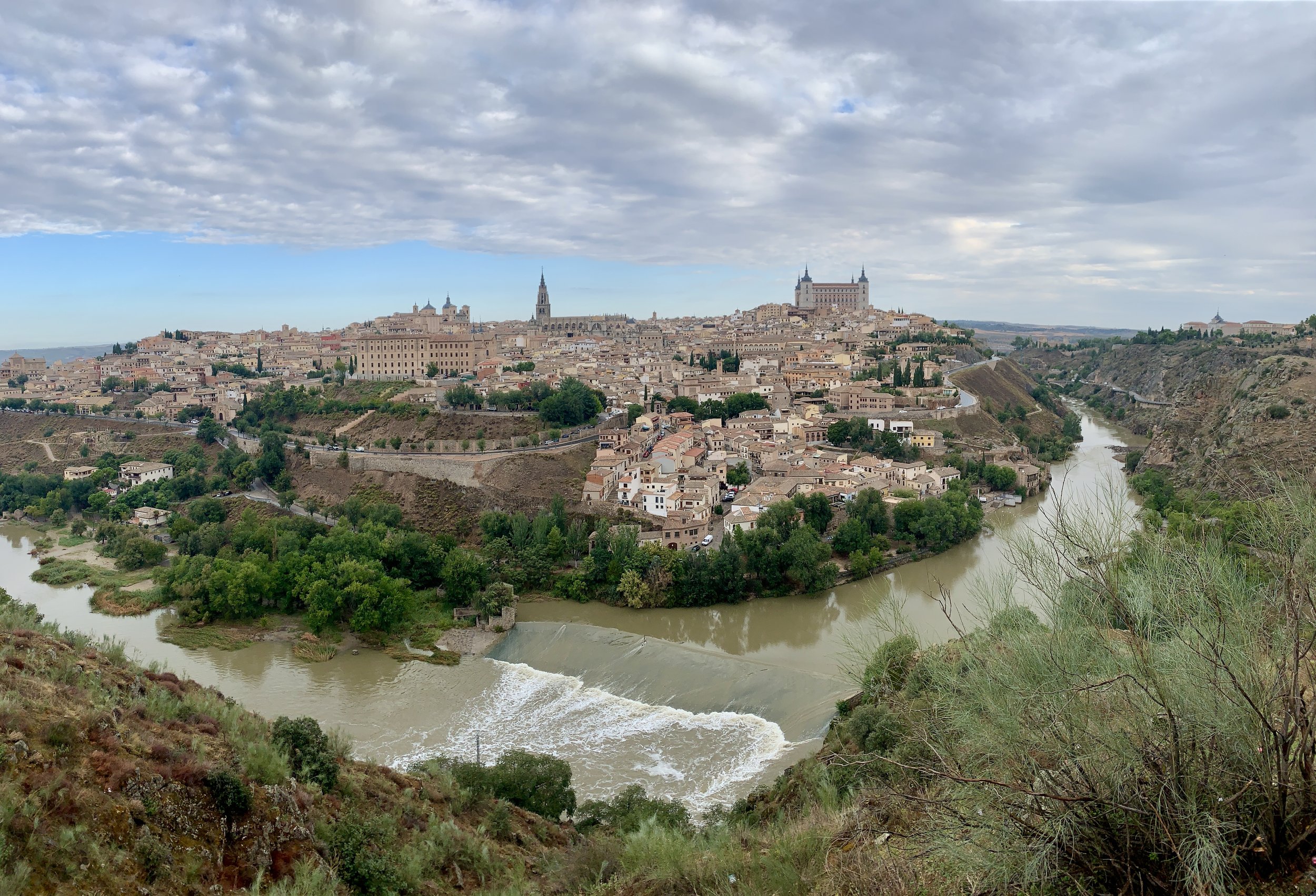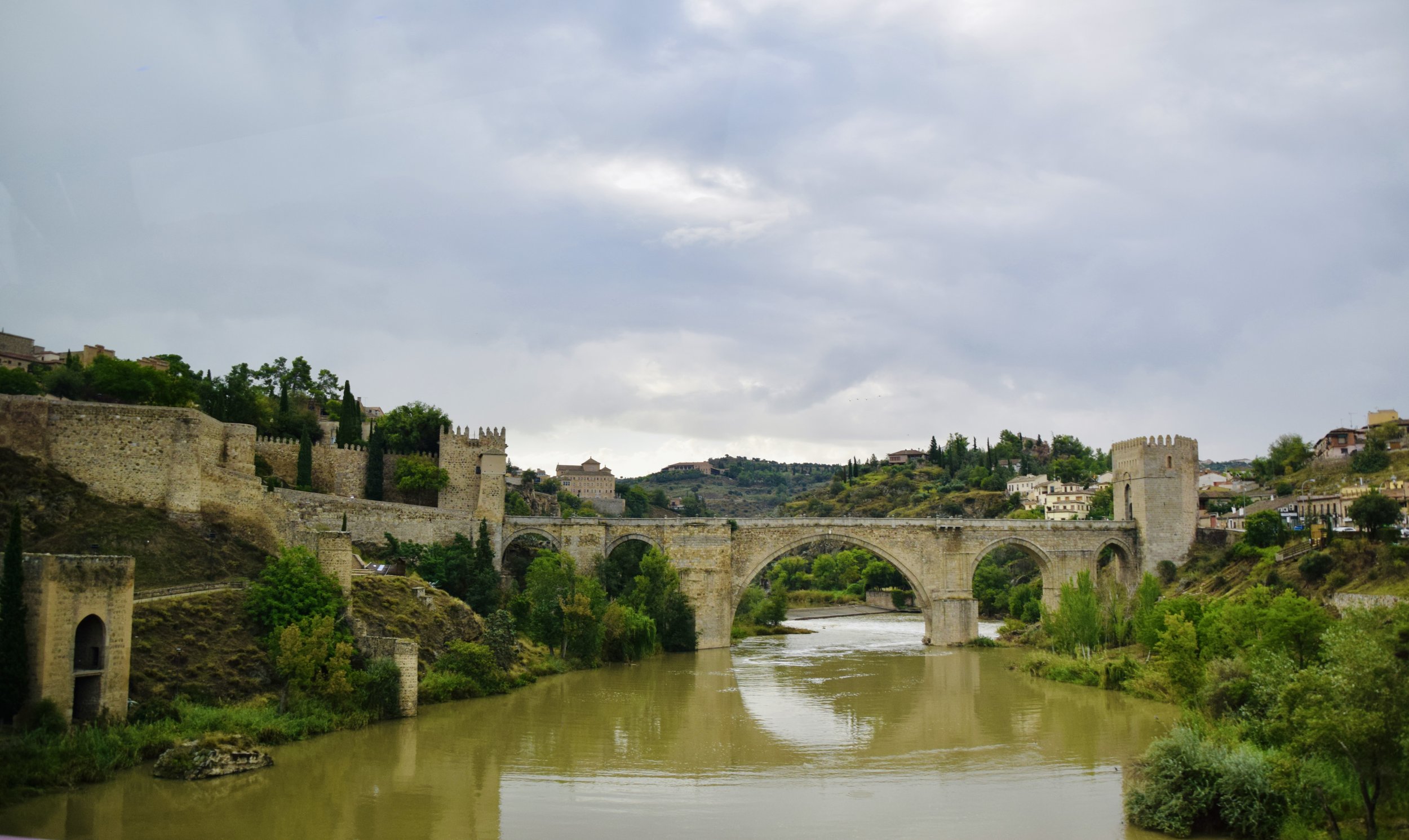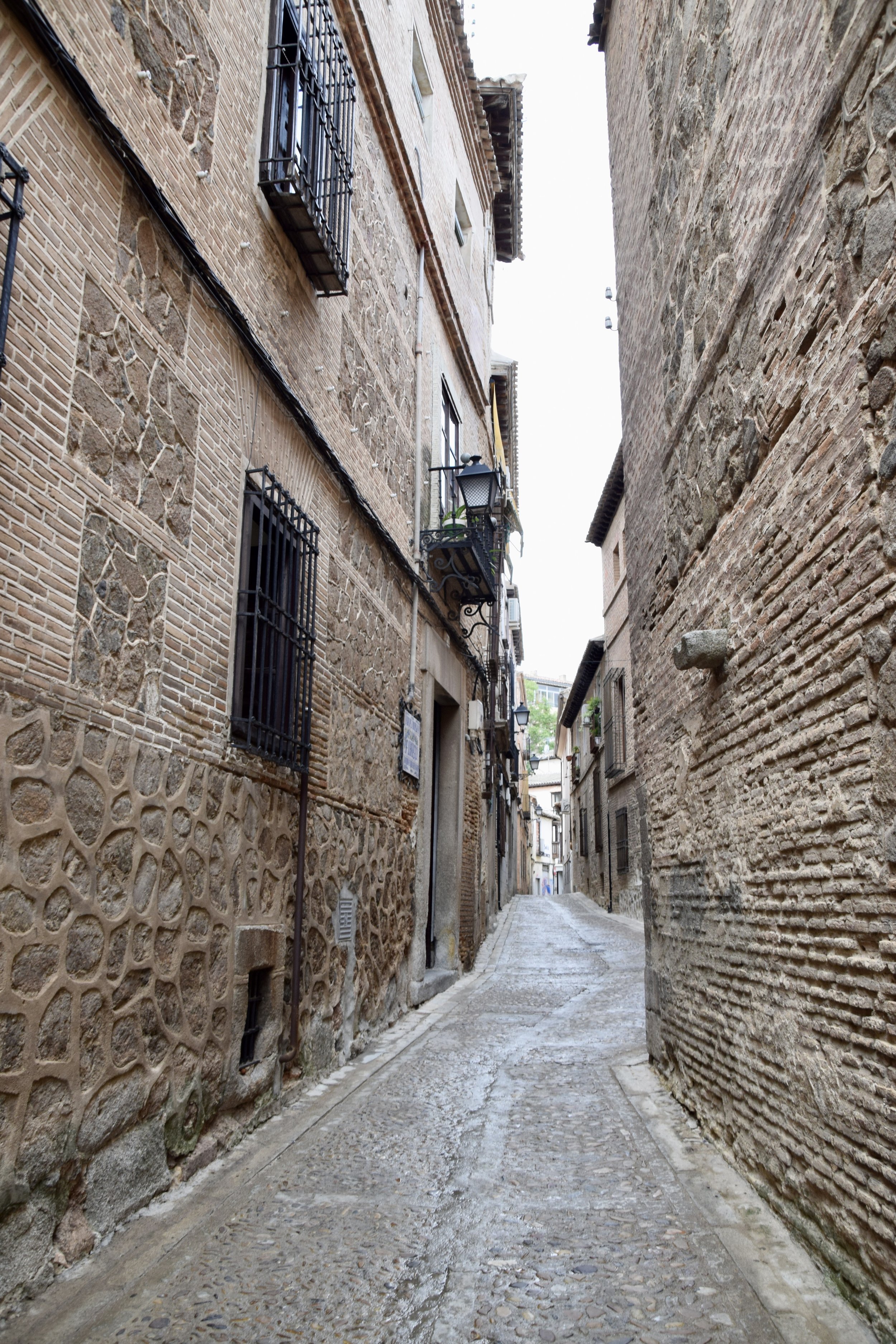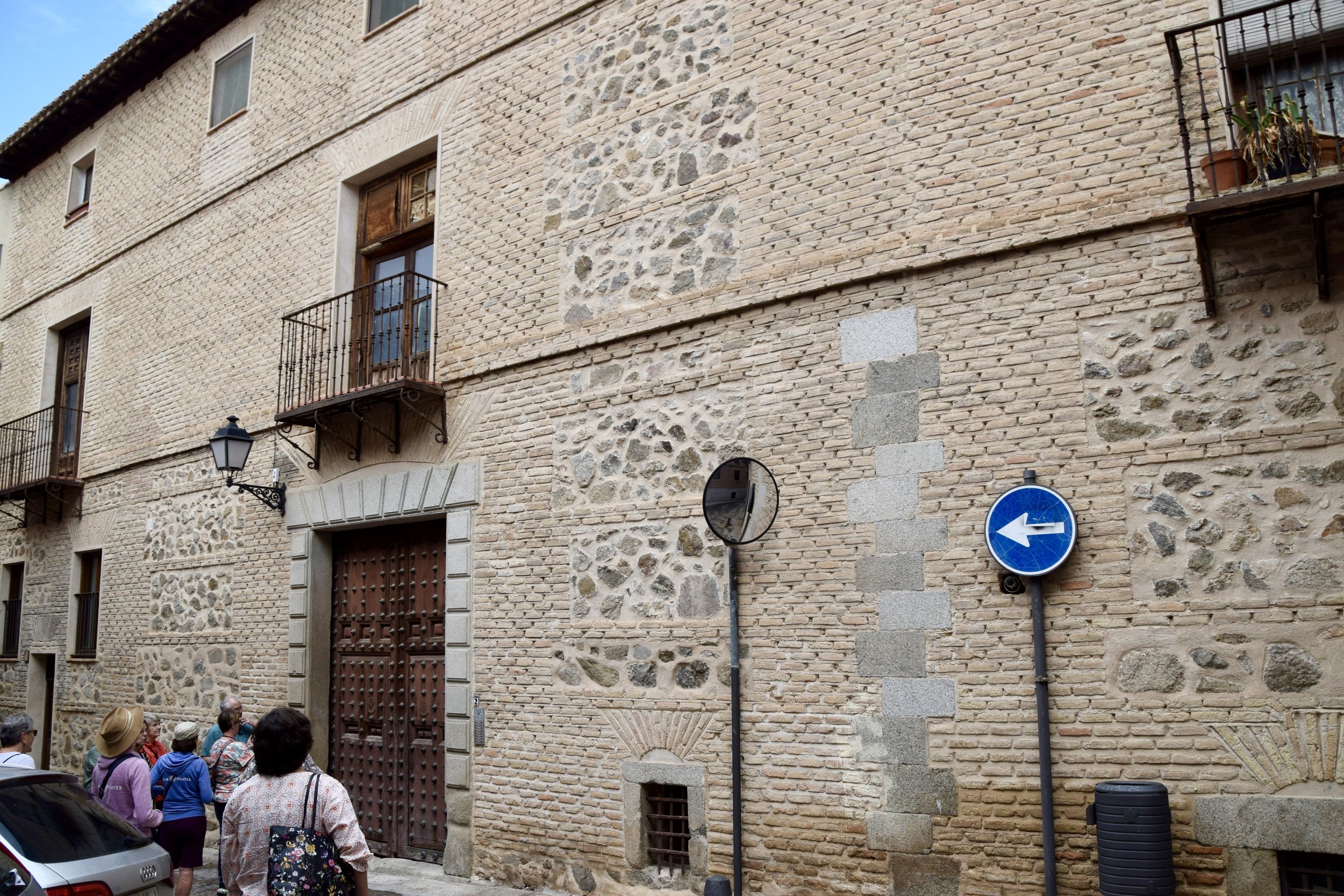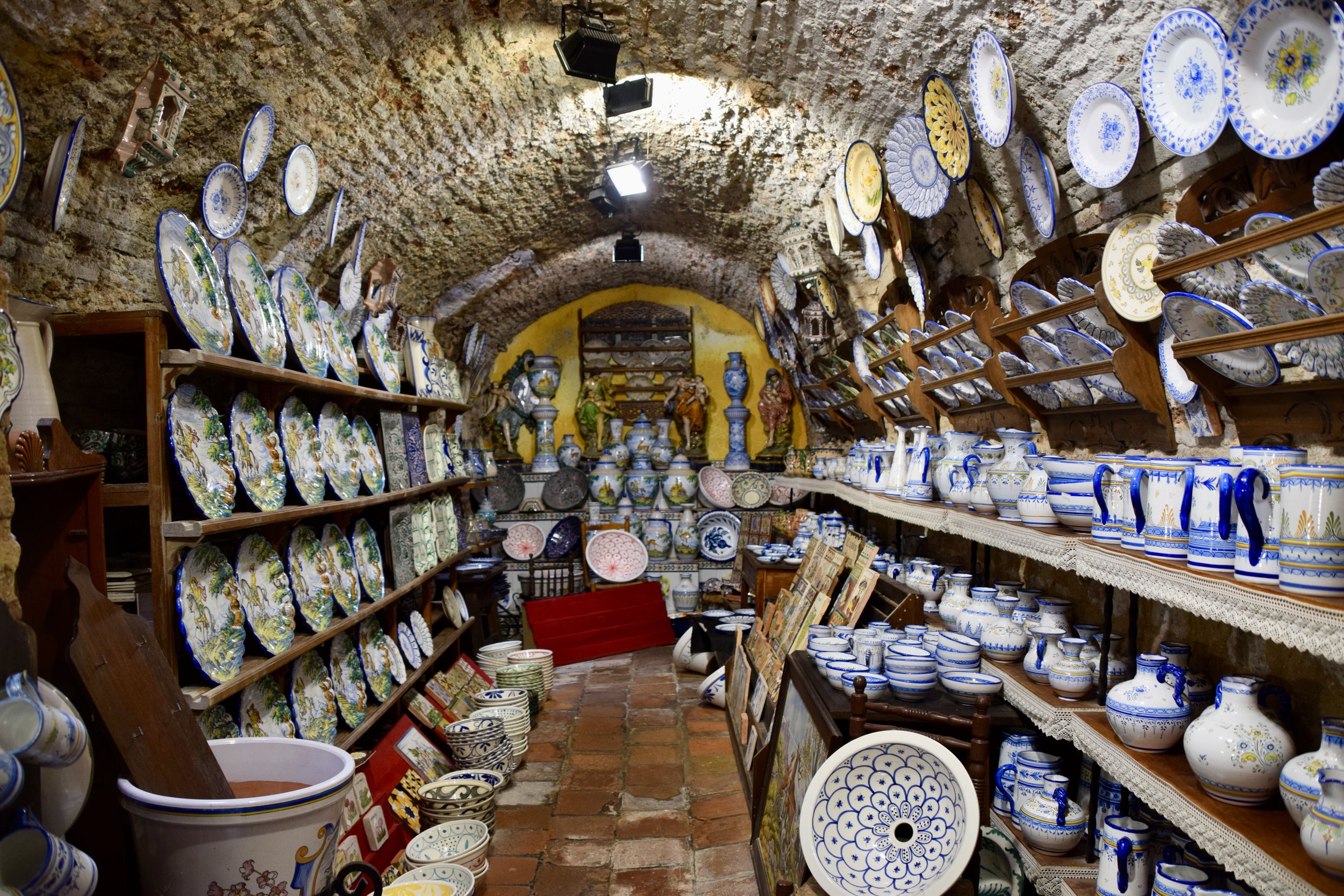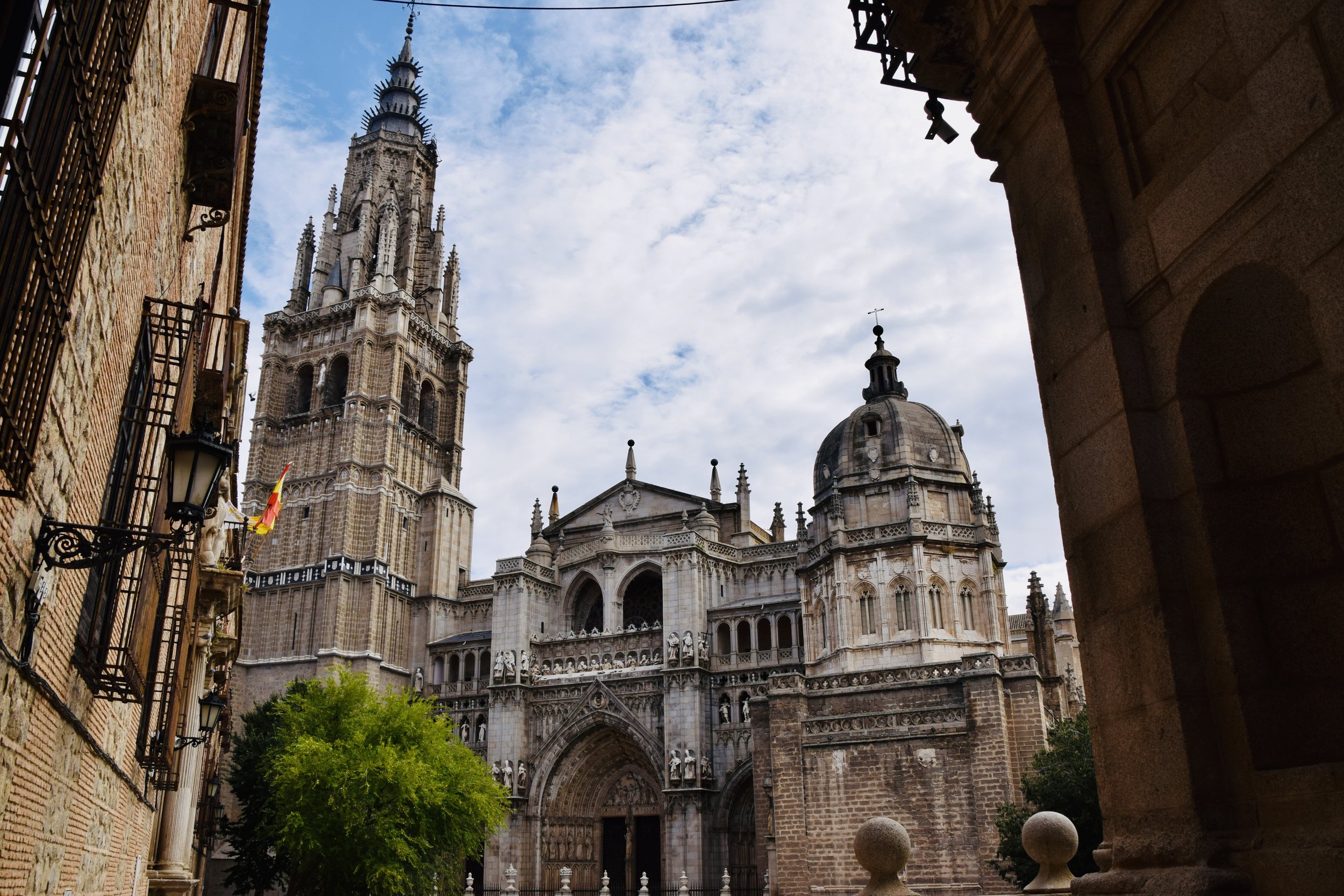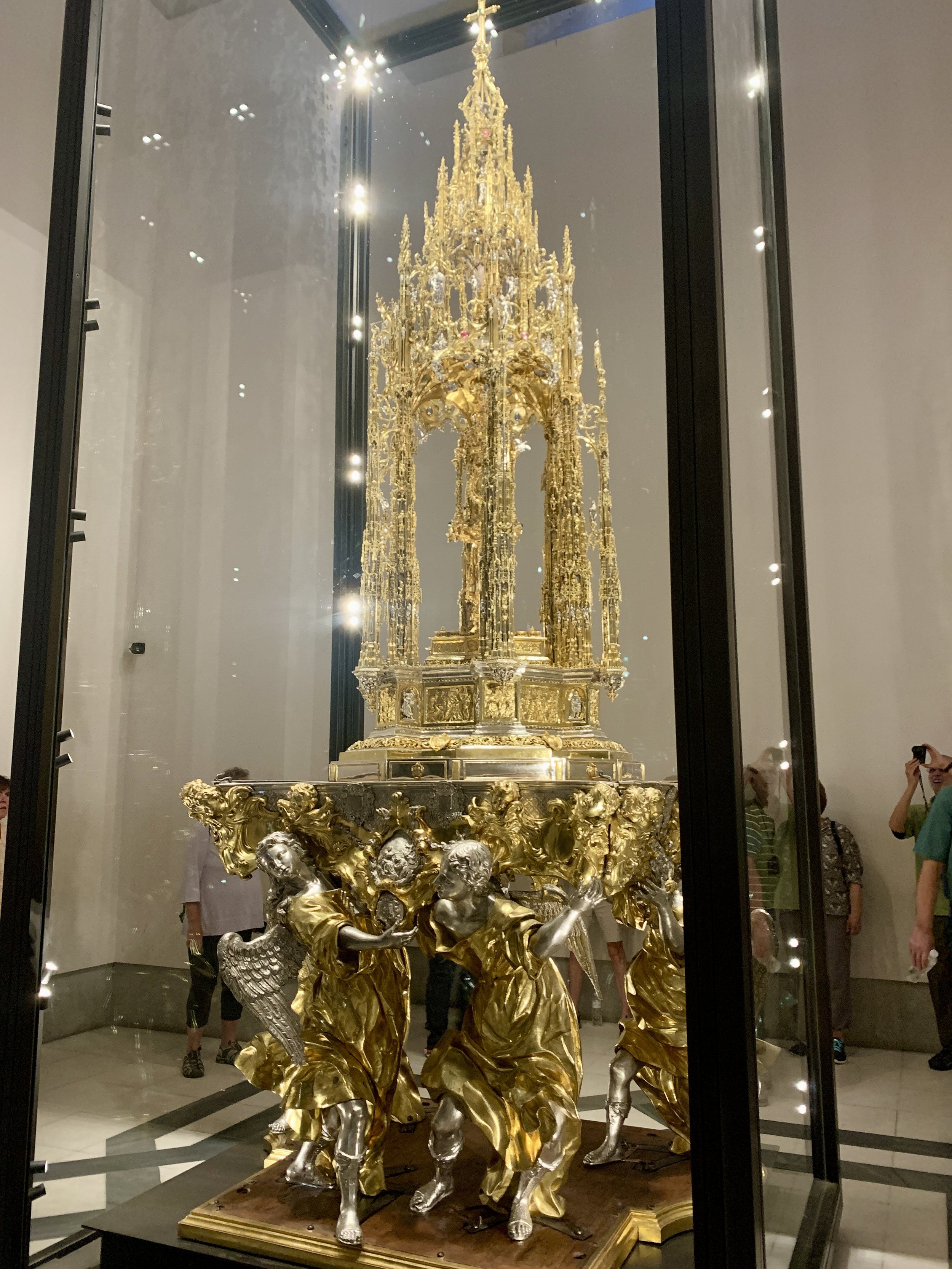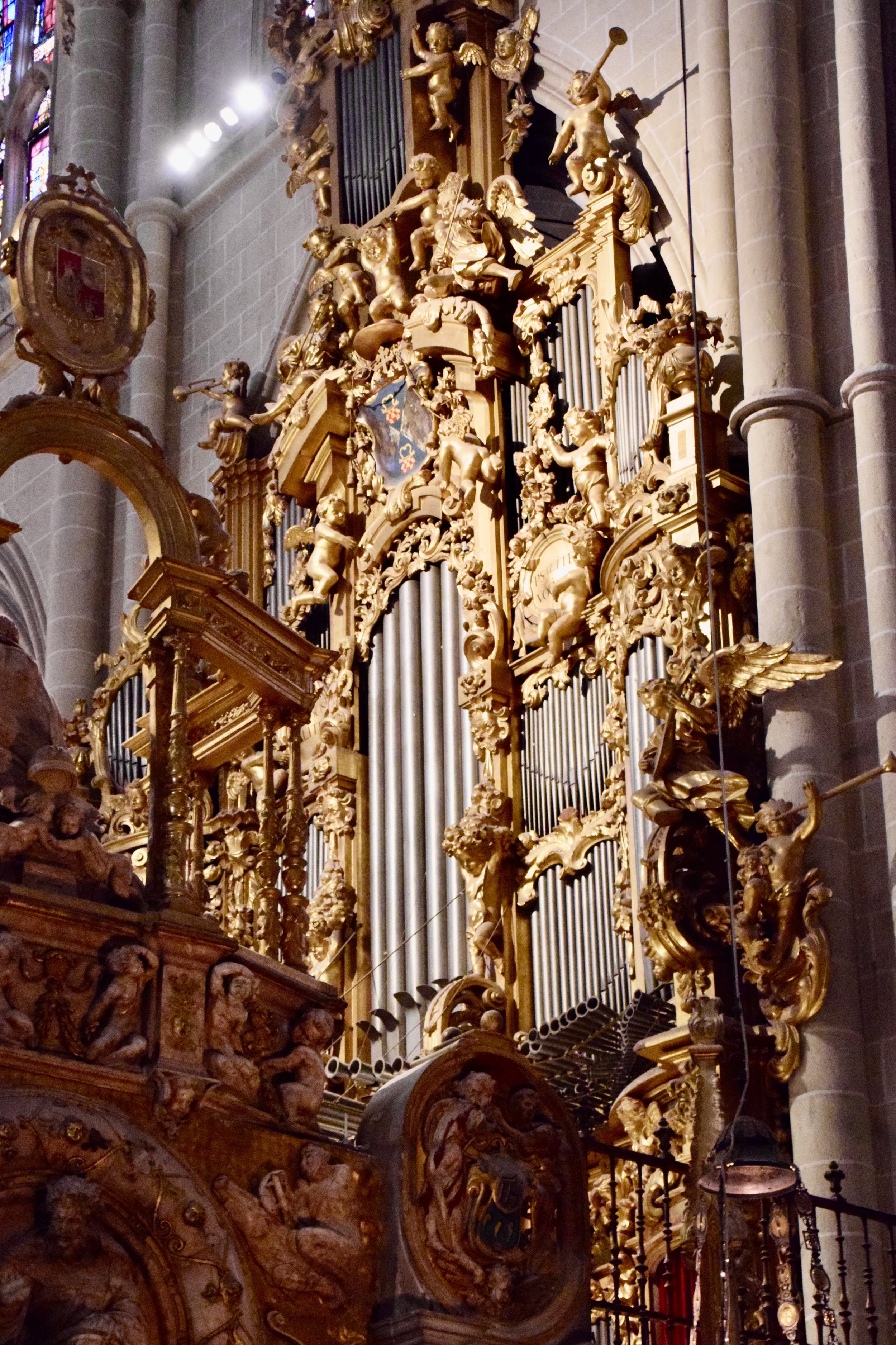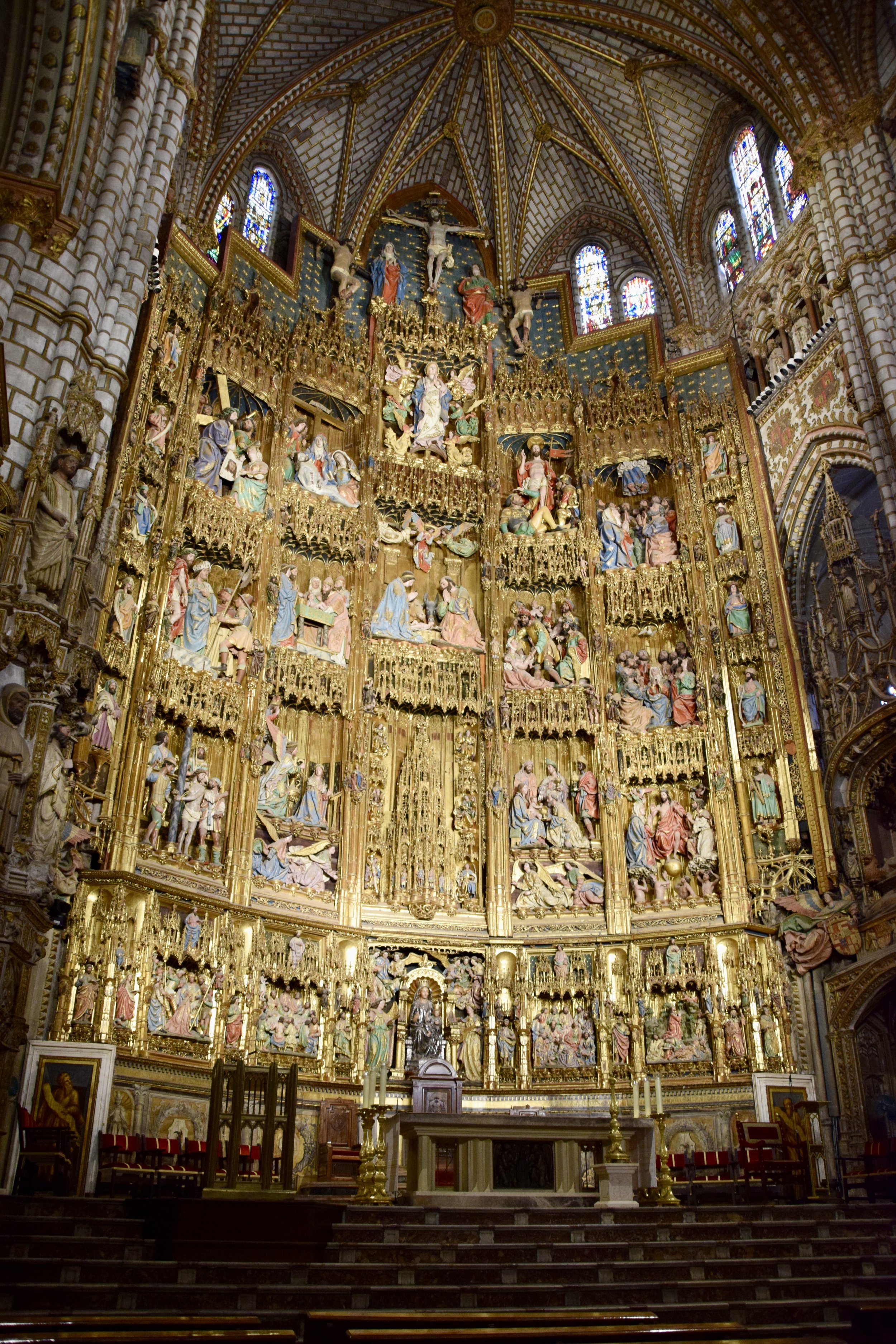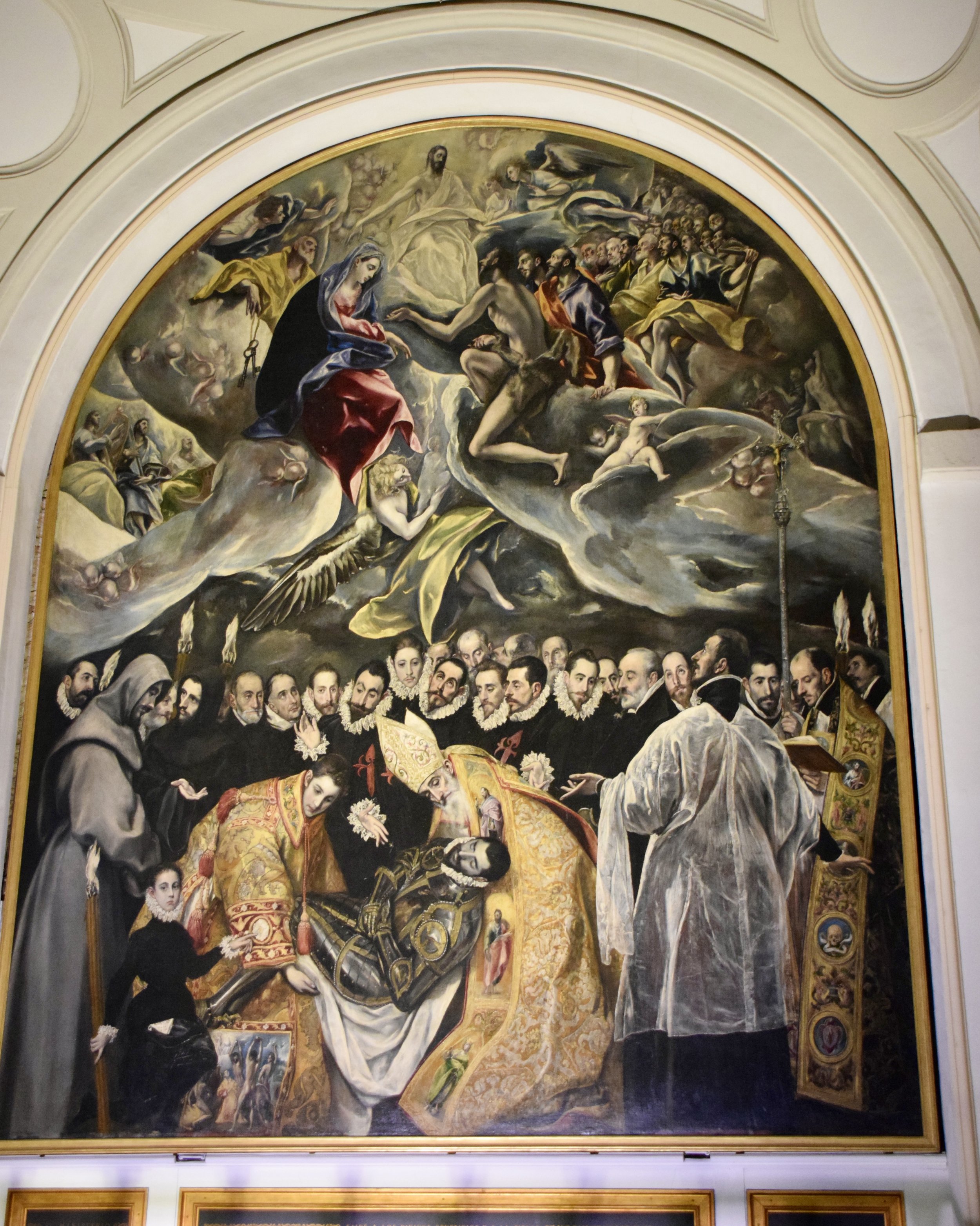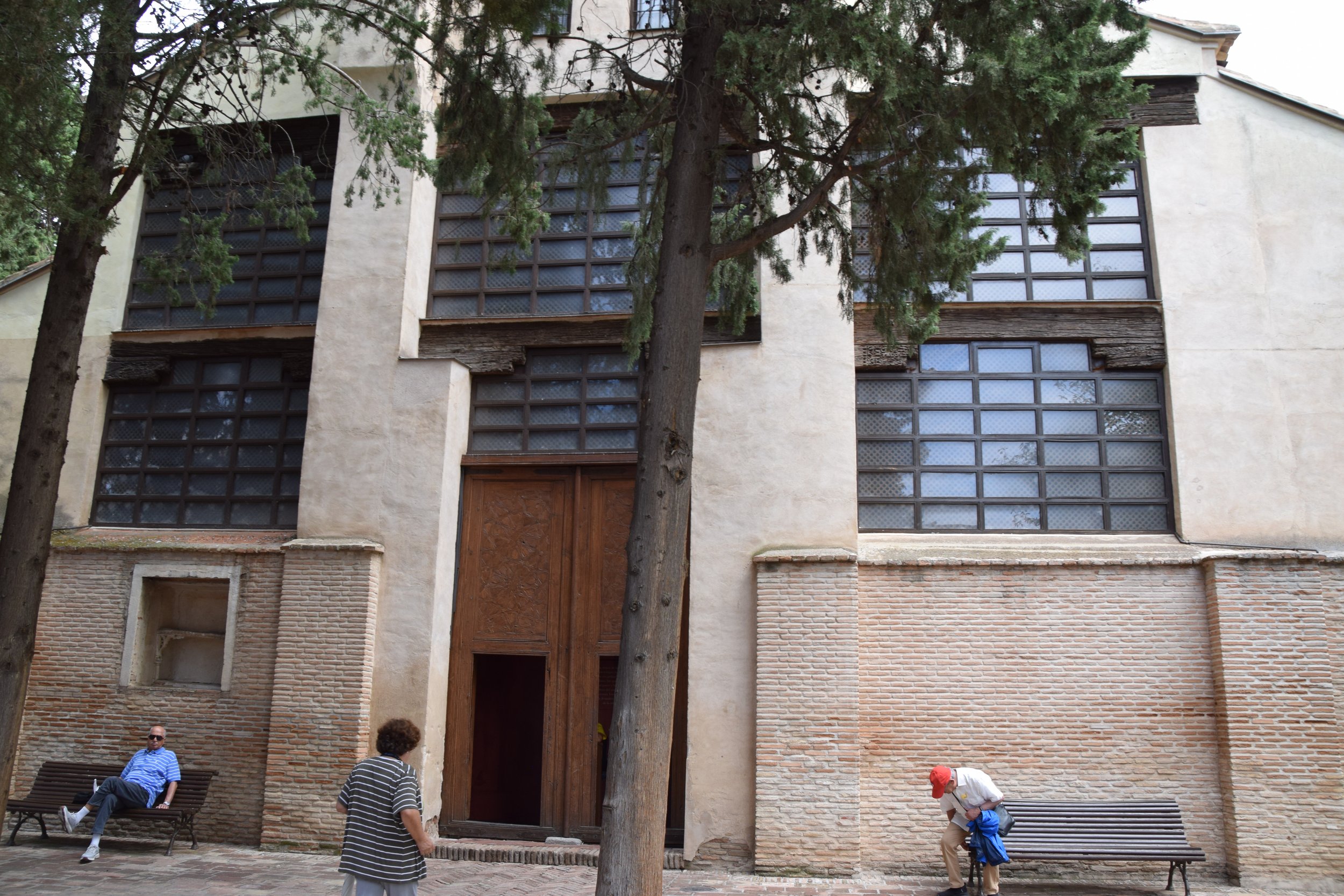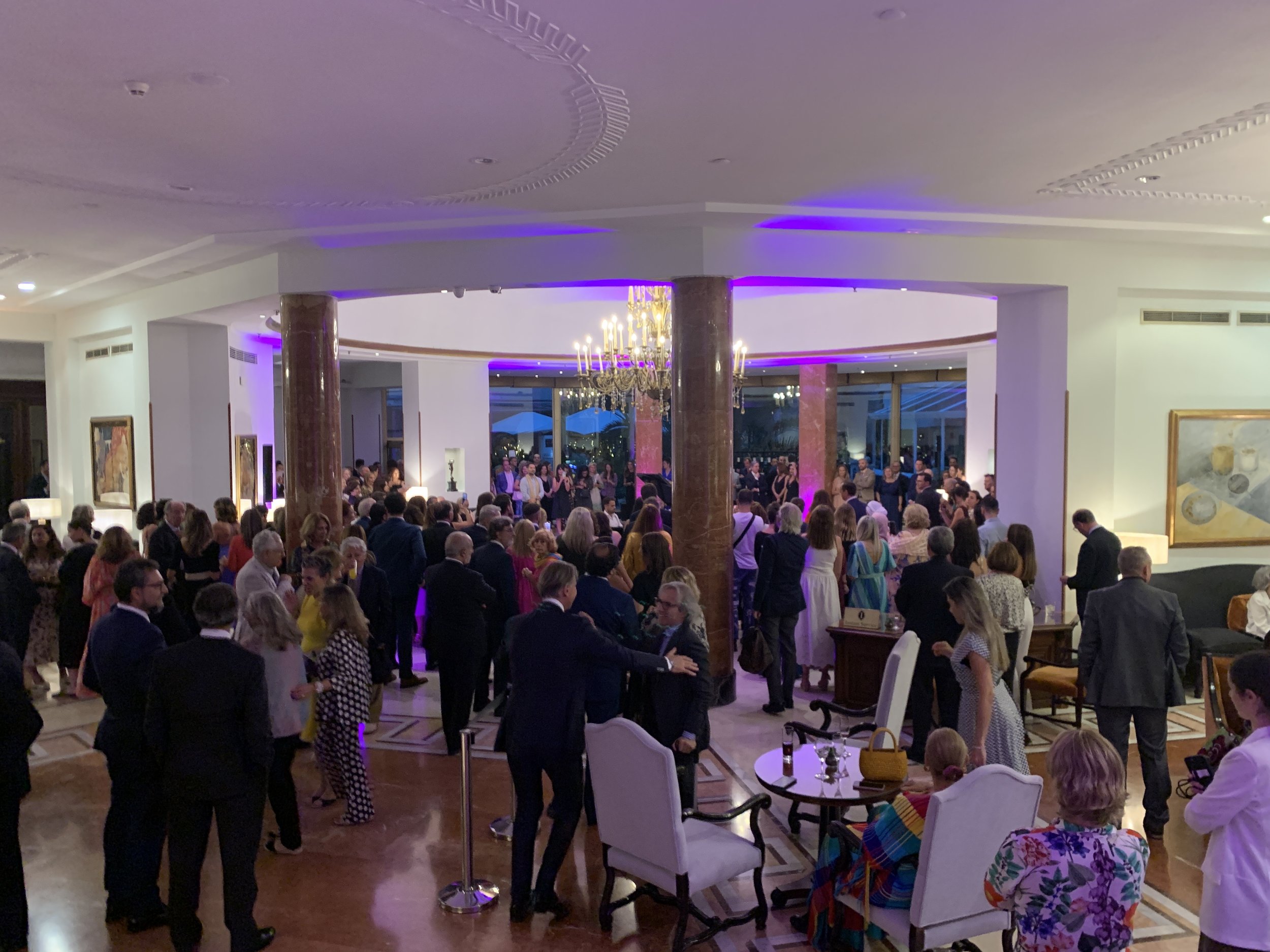
holy Toledo
We were split up again today. Rob and Ken went off on a day trip to Avila and Segovia….
Avila (photo by Ken)
Segovia cathedral (photo by Ken)
Alcazár, Segovia (photo by Ken)
Roman aqueduct in Segovia. Seventeen miles long and built without mortar between the stones. (photo by Ken)
…Heather met up with a friend to do some shopping, and I signed up on the optional Viking excursion to Toledo… which the guide (Vicki, making a return from yesterday’s tour) insisted was pronounced “toe-LAY-doe” because “toe-LEE-doe” is in Ohio, not in Spain. Fair enough. It was about an hour outside Madrid, so I had a nice little nap on the way out there until Vicki got back on the PA and announced, “we are here.”
Vicki says that the river is usually much cleaner than this, but today it still has lots of mud and stuff that has washed downstream from the torrential flooding they had about a week before we arrived. It was bad enough that it even made the TV news in Canada!
After a brief photo stop at the overlook, we headed down to the city and got a good view of the bridge over the Toja (toe-hah) River.
Toledo is an ancient walled city, it was mentioned as early as 59 BCE in found writings, and was the capital of Spain from 542 - 725 CE. After that, the capital was moved to Madrid. Toledo is known for its steel work, specifically its craftsmanship in swords and armour, all of which are readily for sale at any number of shops in the area.
So many styles - but they all have one thing in common: you can’t put them in your carry-on bag.
We got to see a forger working the steel, first putting a piece of steel into the forge…
…and then hammering the hot steel against an anvil.
This changes the steel so that it will snap back to its original shape when it encounters resistance, unlike regular steel that will simply bend. This makes it good for swords and armour.
The other thing that Toledo artisans are known for is Damasquinados. This is an art technique that originated in Syria (hence “Damascus” being in the name) but is carried on here. Used primarily for jewelry and display-worthy plates and other vessels, the technique is interesting. First, the artist takes a piece of steel and make shallow etched patterns into the steel itself. Then the artist takes super-thin 24K gold wire or other metal and lays the wire into the etched grooves. Here’s the artist doing his handiwork:
and here’s a close-up of what he was working on, courtesy of a magnifying camera and screen
The patterns can be quite intricate, from tiny pieces like earrings or pins, to necklace pendants about the size of a quarter,
…to larger pieces such as displayable plates.
From the artisan factory to the walled city: there were about a dozen or so folks on the tour, plus Vicki (the guide) and Francisco (the driver).
Until the early 2000s, you’d have to climb a LOT of stairs to get up to the old city, but now there are a series of escalators. We were all happy about that.
Once up top, we discovered that the city is a rat maze of tiny cobblestone streets (from Roman times) and sheer walls.
But not all is stone and mortar. Hidden away from the street, most of the residential buildings have a centre courtyard, much like New Orleans homes in the French Quarter. Take this nondescript house, for example…
Behind that spiky door, you’ll find a nice little courtyard that is shared by the houses that surround it.
Most of these houses have been here for many hundreds of years. One such house from the 11th century is now being used as a ceramics shop.
Inside the shop, you really get a feel for the tight quarters and rough surfaces of these old houses.
Then it was time to see the cathedral. It’s the largest cathedral in Spain. Construction began in 1227 and was finished in 1493.
Inside, you finally get a sense of how massive the place is.
Inside one room is a giant gold and jewel piece that they actually parade down the streets of Toledo on some holy days.
The cathedral has ten pipe organs, all of which still work.
At the other end, the altar is as enormous and ornate as you’d expect it to be.
And behind that wall at the altar is another elaborate piece.
The window/skylight was added after the original construction so that the morning light would shine on the wall where the wafer representing the body of Christ is kept.
There were so many works of art and architecture in the place, it was a bit overwhelming. I still kept coming around to admire the pipe organs, though. Some of them were absolutely massive (note the person at the bottom of the photo to get a sense of scale).
After some time in the cathedral, we headed into the Church of St Thomas (14th century), this one containing a really famous painting by El Greco called “The Burial of the Count of Orgaz”. It’s huge - almost 16 ft tall and 12 ft wide. It was painted in 1586.
After seeing the painting, it was time for lunch. We stopped in a little cafe, which was cute and clean.
Now I can make my way through a menu in Spanish just fine, if I’m in México. However, Spain and México really don’t share any cuisine whatsoever, so I’m sometimes leery about what to order. Luckily, right there on the menu were tacos de manchego frito con frutas rojas (fried Manchego cheese tacos with red fruit). Well, that sounded delicious and seriously how can you go wrong with cheese tacos? Here’s what showed up at the table:
Cheese croquettes with raspberry dipping sauce. They were pretty tasty, but they weren’t tacos, at least not as I know them.
After lunch, we headed into the Jewish part of the city. The city was inhabited by Christian, Jewish, and Arab/Muslim cultures who all got along peacefully. We saw a 12th century synagogue, which was quite plain on the outside.
Inside, it’s much more elaborate - however, there are no religious artefacts inside as the place is now a museum and no worship happens here anymore.
One of the more interesting architectural features was the pair of alabaster windows in one end of the building.
Leaving the old city via the ancient bridge, it was easy to see how the city could be defended against attackers due to its perch up high on the banks.
We were all tired after several hours of climbing the narrow, cobblestone streets and a few of us napped during the hours’ drive back to Madrid.
Interestingly, the hotel celebrated its 70th anniversary tonight and there was a gala going on.
It was a good, but exhausting day. Now we’re all packed again and ready for tomorrow’s journey.
Click here to return to the previous day




